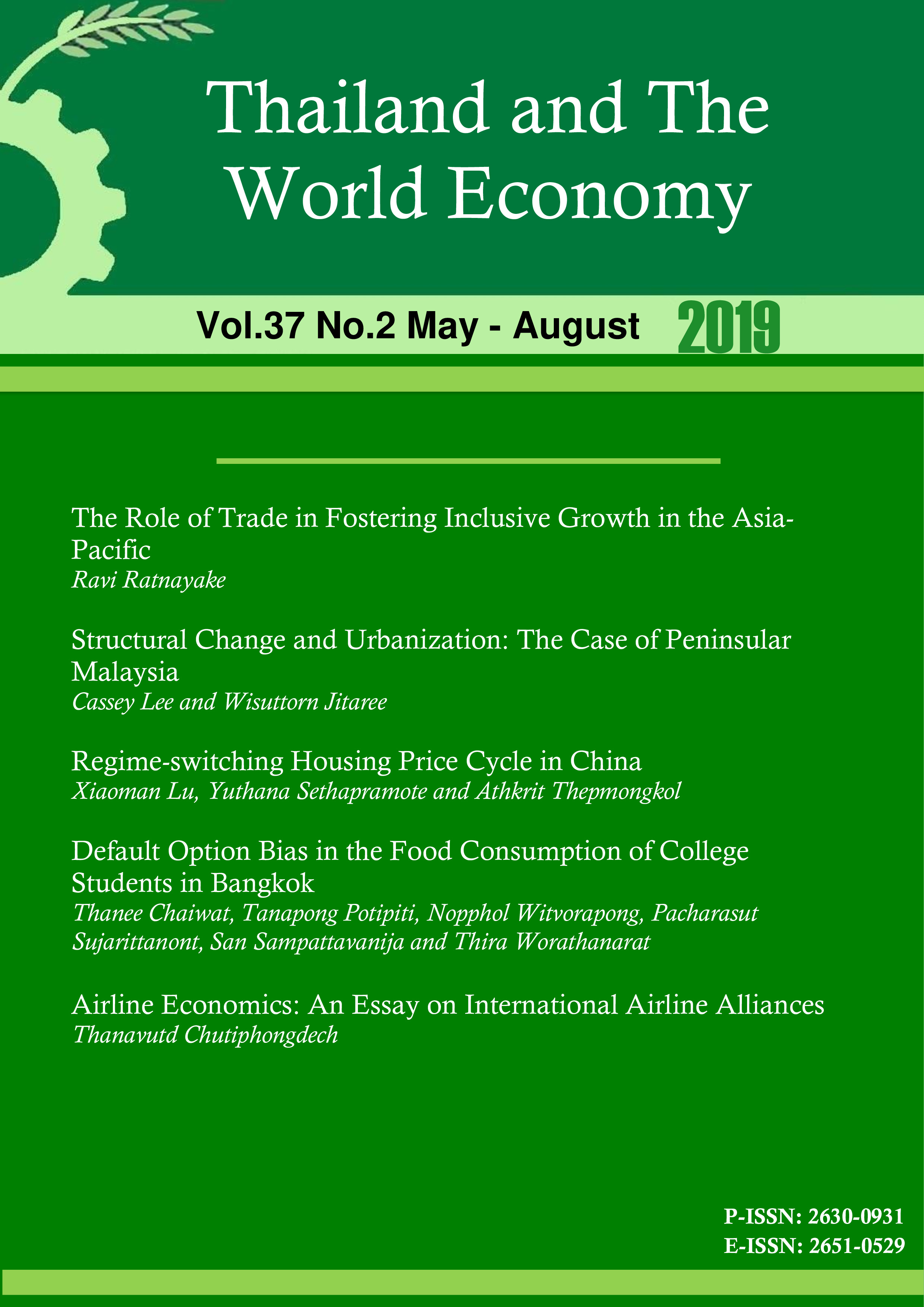Structural Change and Urbanization: The Case of Peninsular Malaysia
Keywords:
Structural Change, Urbanization, MalaysiaAbstract
Structural change and urbanization are two key features of economic development. This study examines how urbanization has taken place during the different phases of structural change in Peninsular Malaysia. There is empirical evidence that urbanization – measured in terms of population growth at different level of aggregation – is driven by different economic sectors in the past one hundred years from 1911-2010. In the early stages of the country’s development, a succession of emphasis on different primary commodities – tin, rubber, palm oil – affected urbanization. Industrialization was a key driver of urbanization from 1960s to the 1980s. However, with deindustrialization since the 1990s, services began to assume a more important role.
References
Bruton, H. (1992). The political economy of poverty, equity and growth: Sri Lanka and Malaysia. Washington DC: World Bank.
Chai, H. (1967). The development of British Malaya, 1896-1909 (2nd ed.). Kuala Lumpur: Oxford University Press.
Cho, G. (1990). The Malaysian economy: Spatial perspectives. London: Routledge.
Drabble, J. (2000). An economic history of Malaysia, c. 1800-1990: the transition to modern economic growth (a modern economic history of Southeast Asia). Basingstoke England: Macmillan Press in Association with the Australian National University, Canberra.
Fujita, M. & Thisse, J.(2013). Economies of agglomeration: cities, industrial location and globalization. (2nd ed.). Cambridge: Cambridge University Press.
Hamer, A., & Linn, J. (1987). Urbanization in developing world: patterns, issues and policies, ed. by Mills, E.S. in Handbook of regional and urban economics (2nd ed.). Amsterdam: Elsevier.
Henderson, V. (2002). Urbanization in developing countries. World Bank Research Observer, 17(1), 89-112
ITRI. (2011). Historical trends in tin production. mimeo.
Jomo, K. (1990). Growth and structural change in the Malaysian economy (Studies in the economies of east and South-East Asia). Hampshire: Macmillan.
Lim, C. (1967). Economic development of modern Malaya. Kuala Lumpur: Oxford University Press.
Lim, H. (1978). The evolution of the urban system in Malaya. Kuala Lumpur: Penerbit University Malaya.
Malaysian Rubber Board. (2016). Natural rubber statistics 2016. Kuala Lumpur.
Michaels, G., Rauch, F., & Redding, S. (2012). Urbanization and structural transformation. The Quarterly Journal of Economics, 127(2), 535-586.
Onn, F. (1989). (1989). The Malaysia economic challenge in the 1990s: Transformation for Growth. Singapore: Longman.
Rasiah, R. (2006). Explaining Malaysia’s export expansion in palm oil and related products, ed. by Chandra, V. in Technology, adaptation and exports. Washington DC: World Bank.
Rasiah, R. (2006). Malaysian economy: Unfolding growth and social change. Kuala Lumpur: Oxford University Press.
Saw, S., & Institute of Southeast Asian Studies. (2007). The population of Malaysia. Singapore: Institute of Southeast Asian Studies.
Saw, S. (2007b). The population of Malaysia. Singapore: ISEAS.
Saw, S. (2015). The population of Malaysia, (2nd ed.). Singapore: ISEAS.
Sidhu, M., & Jones, G. (1981). Population dynamics in a plural society, Peninsular Malaysia. Kuala Lumpur, Malaysia: UMCB Publications.
Stiglitz, J. (2019). People, power and profits: Progressive capitalism for an age of discontent. New York: Norton.










